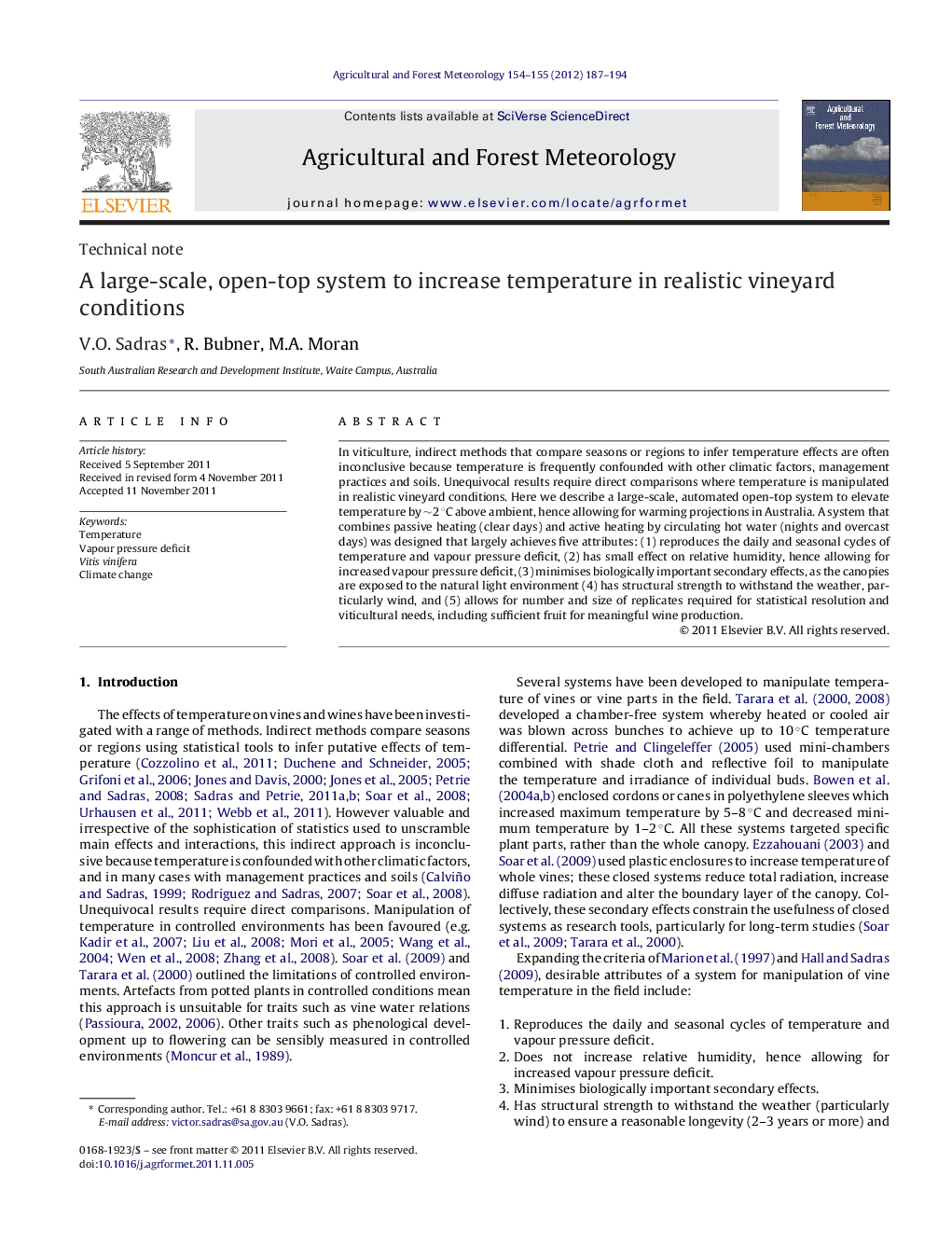| Article ID | Journal | Published Year | Pages | File Type |
|---|---|---|---|---|
| 82098 | Agricultural and Forest Meteorology | 2012 | 8 Pages |
In viticulture, indirect methods that compare seasons or regions to infer temperature effects are often inconclusive because temperature is frequently confounded with other climatic factors, management practices and soils. Unequivocal results require direct comparisons where temperature is manipulated in realistic vineyard conditions. Here we describe a large-scale, automated open-top system to elevate temperature by ∼2 °C above ambient, hence allowing for warming projections in Australia. A system that combines passive heating (clear days) and active heating by circulating hot water (nights and overcast days) was designed that largely achieves five attributes: (1) reproduces the daily and seasonal cycles of temperature and vapour pressure deficit, (2) has small effect on relative humidity, hence allowing for increased vapour pressure deficit, (3) minimises biologically important secondary effects, as the canopies are exposed to the natural light environment (4) has structural strength to withstand the weather, particularly wind, and (5) allows for number and size of replicates required for statistical resolution and viticultural needs, including sufficient fruit for meaningful wine production.
► We describe a novel, large-scale heating system for established vineyards. ► The system reproduces the daily and seasonal cycles of temperature and vapour pressure deficit. ► The system minimises secondary effects, as the canopy is exposed to the natural light environment. ► The system has structural strength to withstand the elements, particularly wind. ► The system allows for number and size of replicates required for statistical resolution and meaningful wine production.
